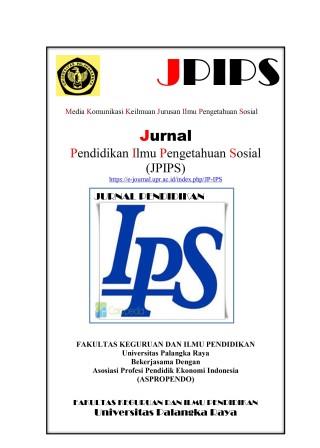Strategi Bersaing Antar Pedagang Kuliner Taman Sangomang Palangka Raya
DOI:
https://doi.org/10.37304/jpips.v14i1.4920Keywords:
Competitive Strategy, Culinary Traders, Sangoman Park, Palangka Raya CityAbstract
The problem raised in this research is how is the competitive strategy between culinary traders in the Sangomang Park, Palangka Raya. With the number of informants as many as 21 people and data collection techniques used in this study were documentation and interviews. The data analysis methods used are: (1) Data Reduction, (2) Data Presentation, and (3) Data Conclusion Drawing. The results of this study are culinary traders at Sangomang Park in terms of products using 3 competitive strategies that are applied, including developing existing products, making new products that do not exist in other traders, and maintaining or maintaining the quality of existing flavors. For the price applied, the trader follows or equals the price of the surrounding trader. Then in terms of service, culinary traders in Sangomang Park as a whole apply good service with smiles, greetings and greetings. Regarding promotion, there are those who promote their wares through social media and some only through their families, employees, and people they know. Even so, the income of traders during the pandemic decreased drastically, in this situation, traders rely on online motorcycle taxi services that accept delivery services for buyers, even though some continue to sell and some are closed by making independent businesses in their respective homes.
Downloads
References
Amir, M. Taufiq. (2012). Manajemen Strategik: Konsep dan Aplikasi. Jakarta: Rajawali Pers
Ilham. (2014). Persaingan Usaha pada Pedagang Pakaian Pasar Buana. Skripsi Fakultas Ekonomi. IAIN Makassar
Kasmir. (2007). Kewirausahaan, Jakarta: PT Raja Grafinda Persada
Listina Deny, R. F. (2013). Kewirausahaan dan Strategi Bersaing Pedagang Sembako di Pasar Raya I Kota Salatiga, 3, 1.
Moleong, L.J. (2011). Metodologi Penelitian Kualitatif Edisi Revisi. Bandung: PT. Remaja Rosdakarya.
Moleong, L.J. (2010). Metodologi Penelitian Kualitatif, Bandung: Remaja Roda Karya
Mudrajad Kuncoro. (2005). Strategi bagaimana Meraih Keunggulan Kompetitif, Jakarta: Erlangga.
Mujianto. (2017). Strategi Bersaing Pedagang Kaki Lima Kota Poso. Skripsi, Universitas Tadulako Palu
Rahayu, Y. S., & Fitanto, B. (2013). Strategi Pedagang Pasar Tradisional Menghadapi Persaingan dengan Retail Modern dan Preferensi Konsumen (Studi Kasus Pada Pasar Legi Kota Blitar) Yenika. Jurnal Ilmiah Mahasiswa FEB, 1–10.
Rinto Alexandro, Tonich Uda, Laba Lastaida Pane. (2020). Analisis Pengembangan Ekonomi Kreatif Kuliner Khas Suku Dayak Kalimantan Tengah. Jurnal Ilmiah Ilmu Sosial. Vol 6 No 1, hal 11-25. https://ejournal.undiksha.ac.id/index.php/JIIS/article/view/24749.
Sari. Titis Puspita, Ety Dwi Susanti. (2021). Analisis Strategi Bersaing Dalam Persaingan Usaha Di Bidang Kuliner Ayam Geprek (Studi Kasus Pada Rumah Makan Mi3 Setan Dan Ayam Geprek jumbo Waru Sidoarjo). Jurnal Revolusi Indonesia, 1(5), 442.
Satni. (2016). Teknik Pemasaran Pada Pedagang Online Shop. Jurnal. Universitas Tadulako Palu
Widiawati, L., Indrawati, H., & Trisnawati, F. (2018). Business Competition Strategy Patchle Stall Catfish at All the East Railway Roads District of Pangkalan Kerinci Regency of Pelalawan. Program Studi Pendidikan Ekonomi Jurusan Pendidikan Ilmu Pengetahuan Sosial Fakultas Keguruan Dan Ilmu Pendidikan Universitas Riau, (4), 7.














